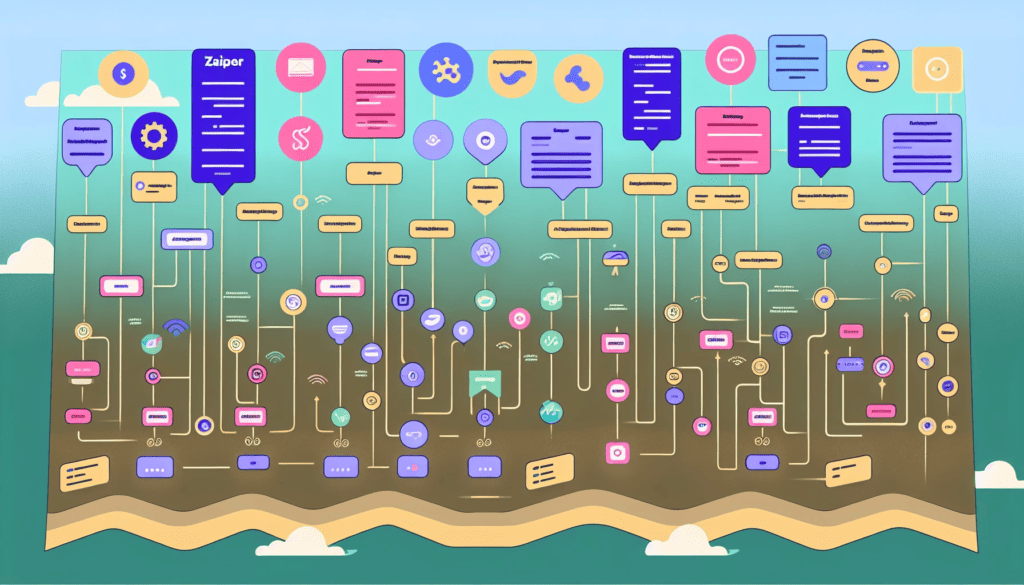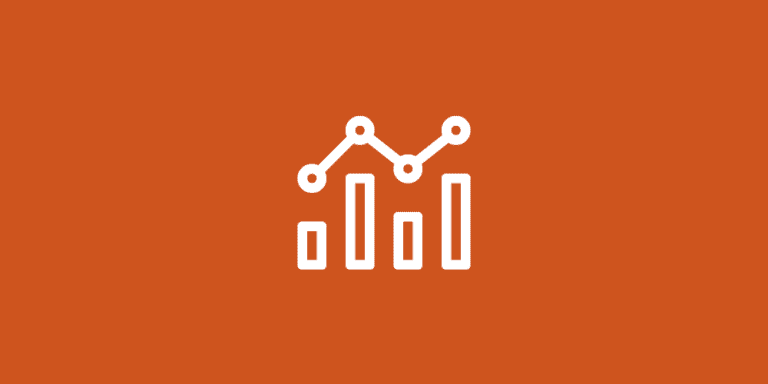Unveil How Much Does Zapier Cost: 6 Clever Insights

In the age of automation, the potential to save time and streamline operations is invaluable. Zapier, a leader in the automation space, offers a variety of pricing plans to cater to businesses of all sizes and needs. Discover the ins and outs of Zapier’s pricing structure and “how much does Zapier cost” to benefit your business, so you can make the most of your investment in automation.
Key Takeaways
- Decode Zapier’s pricing structure, ranging from Free to Company plans based on task limits and access to premium apps.
- Understand the Task-Based Pricing Model with varying plan limits. Optimize automation processes for budget management.
- Leverage shared workspaces and app connections, customization options, and advanced admin permissions for streamlined workflow automation and efficient collaboration.
Decoding Zapier’s Pricing Structure

Navigating the world of automation can be daunting, especially when it comes to understanding the cost. However, deciphering Zapier pricing plans doesn’t have to be complicated. With offerings ranging from the Free plan to the Company plan, there’s a tier to suit businesses of all sizes and automation needs. Whether you’re a small team just dipping your toes into the automation pool or a large enterprise with complex workflows, the Zapier pricing plan structure is designed to accommodate your specific requirements.
Zapier’s pricing is primarily based on the number of tasks completed within a billing cycle. Each plan offers a different number of tasks, Zaps (automation), and access to premium apps. Also, you can choose between monthly and annual billing, with discounts available for annual subscriptions. Now, let’s break down each plan and explore the factors that can impact the cost of automating tasks with Zapier.
Breaking Down Each Plan
Let’s analyze the offerings and limitations of each Zapier plan for a clearer understanding. The Zapier Free plan allows for up to 5 Zaps and 100 tasks per month, with access to basic apps but not premium ones. This plan is ideal for small businesses or individual users who need a simple solution for automating tasks.
On the other hand, the Starter plan provides 20 Zaps, 750 tasks per month, and access to both basic and premium apps for unlimited users, but lacks custom logic features. For more advanced users, the Professional, Team, and Company plans offer higher task limits and additional features.
The Professional plan comes with a wide range of features. It provides unlimited Zaps, 2,000 tasks per month as well as access to unlimited premium apps and custom logic with paths. The Team plan provides Unlimited Zaps and 2,000 tasks per month, while the Company plan comes with Unlimited Zaps will need to contact sales for tasks per month, both offering unlimited premium apps and custom logic with paths.
Your choice of plan will depend on the scale and complexity of your automation needs.
Monthly vs. Annual Billing
Zapier offers both monthly and annual billing options, giving you the freedom to select a payment schedule that aligns with your budget and needs. The key distinction between these options is the discount offered for annual billing. By opting for a “month billed annually” subscription, you can save 33% compared to monthly billing.
You should note that Zapier offers a complimentary 14-day premium trial when you first sign up. This trial allows you to explore the features and functionality of the platform before committing to a paid plan. However, keep in mind that unused tasks in your annual billing do not carry over to the next billing cycle.
Understanding the Task-Based Pricing Model
In the context of Zapier’s pricing model, a ‘task’ refers to an action successfully executed by a Zap. Each successful action, such as creating a new Google Contact, is counted as one task. The number of tasks per month for each Zapier plan varies, with the Free plan allowing 100 tasks per month, while other plans offer different limits.
Keep in mind that in Zapier’s pricing model, unused tasks will not be carried over to the following month. Monitoring your task usage and ensuring you’re on the right plan for your automation needs will help you avoid any surprises and make the most of your Zapier experience.
Unveiling the Cost of Automating Tasks with Zapier

So, what does it really cost to automate tasks with Zapier? The key factors that impact the cost of automation are the chosen plan, the number of tasks, and the complexity of the Zaps. As mentioned earlier, each plan comes with a specific number of tasks per month, which directly influences the overall cost. Additionally, complex, multi-step Zaps and premium app integrations may require higher-tier plans, increasing the overall cost of using Zapier.
Understanding these factors and selecting the right Zapier plan for your business will help you balance the benefits of automation with the associated costs. By optimizing your automation processes and managing your Zapier budget effectively, you can make the most of the platform’s features and enhance your team’s productivity.
How Many Tasks Do You Get?
The number of tasks offered differs with each Zapier plan, ranging from 100 tasks per month for the Free plan to millions of tasks for higher-tier plans. A task in Zapier’s system is defined as the movement of data or the execution of an action within an automated workflow, commonly referred to as a Zap. Each time data is transferred or an action is taken, it is counted as a task.
Being conscious of your task usage and the limits of your selected plan is crucial to prevent any disruptions in your automation processes. If you exceed your task limit, your Zaps may not run as expected until the limit is reset or you upgrade your plan. Monitoring your task usage can help you stay within your plan limits and ensure smooth automation.
The Price of Complexity: Multi-Step Zaps and Premium Apps
The complexity of your automated workflows can also impact the Zapier cost. Multi-step Zaps, which involve multiple actions or steps, may require a higher-tier plan to accommodate the increased complexity. Additionally, premium apps, which are available exclusively to customers on paid plans, can influence the cost of your Zapier subscription. For example, the Starter plan includes three premium apps, while the Professional plan and higher provide access to unlimited premium apps.
By considering the complexity of your Zaps and the premium apps you require, you can make informed decisions about the most suitable Zapier plan for your business. Balancing the cost of automation with the benefits it provides will enable you to optimize your investment in Zapier and streamline your operations.
Maximizing Efficiency: The Benefits of Investing in Zapier

Investing in Zapier can deliver a significant return on investment by streamlining operations, automating repetitive tasks, and saving valuable time for your business. As the world becomes increasingly interconnected, the ability to efficiently synchronize data and automate processes is essential for staying competitive and driving growth.
Zapier’s automation platform offers a powerful solution for businesses looking to improve their efficiency and reduce the burden of manual tasks. By leveraging the platform’s features and understanding its pricing structure, you can make the most of your investment in automation and unlock the full potential of your business.
Streamlining Operations with Automated Workflows
Automated workflows in Zapier can help businesses minimize human error and increase efficiency by eliminating manual processes that could be susceptible to mistakes. Automation ensures that tasks are completed consistently and accurately, reducing the risk of errors and improving overall efficiency. This can have a significant impact on your business by freeing up valuable time for your team to focus on more important tasks and insights.
By leveraging Zapier’s automation platform, you can create custom workflows that connect multiple apps and services, allowing for seamless data synchronization and streamlined operations. Whether you’re a small business looking to automate simple tasks or a large enterprise in need of complex, multi-step workflows, Zapier offers the tools and flexibility to help you achieve your goals.
Sync Data and Automate Repetitive Tasks Without Hassle
Zapier allows for easy data syncing and automation of repetitive tasks, freeing up time for more important tasks and insights. By connecting your favorite apps and services to Zapier, you can create automated workflows that handle tasks such as sending notifications, creating tasks/cards from emails, and sharing content on social media, all without the need for manual intervention.
With a simple, user-friendly interface and a vast library of app connections, Zapier enables businesses to automate tasks and processes with minimal effort. By investing in Zapier and its automation capabilities, you can revolutionize your business operations, enhance the customer experience, and ultimately drive growth and innovation.
Exploring Zapier Alternatives for Different Budgets

Although Zapier is a potent automation tool, it’s important to identify that other alternatives might align better with your budget and requirements. Each alternative offers different features and pricing options, allowing you to find the best fit for your business and its unique needs. Some popular Zapier alternatives include Integrately, n8n, and Parabola.
Before deciding to switch to a different automation tool, evaluate your present and future automation needs and compare them with the features and pricing of each alternative. This will ensure that you make an informed decision and choose the tool that best aligns with your business goals and objectives.
When to Consider an Alternative
Several factors need to be considered when thinking about transitioning to an alternative automation tool. If Zapier’s pricing or features do not align with your business requirements, or if you find the platform too complex or lacking in certain capabilities, it might be time to explore other options.
It’s also important to evaluate the potential impact of switching to an alternative tool on your existing processes and workflows. This can help you weigh the benefits of transitioning against the potential drawbacks and ensure that you make an informed decision about which automation tool is best suited for your business.
Comparing Features and Pricing
Consider the features and pricing of each tool when comparing Zapier alternatives to find the most suitable fit for your business. For example, Integrated focuses on simplicity and ease of use, making it an attractive option for small businesses and bloggers. On the other hand, n8n is an open-source alternative that offers complete control over the hosting environment and a wide range of integrations.
By carefully examining the features, pricing, and user reviews of each alternative, including their robust security features, you can gain a deeper understanding of their potential benefits and drawbacks for your business. This will enable you to make an informed decision and choose the automation tool that best supports your business goals and objectives.
Navigating Additional Costs and Hidden Fees

Like any software tool, it’s vital to be aware of any extra costs and hidden fees that might crop up when using Zapier. Some potential hidden costs to consider include charges for third-party app integrations, API requests, and exceeding the task limits of your chosen plan. Understanding these costs can help you manage your Zapier budget more effectively and avoid any unexpected surprises.
By evaluating your automation needs, selecting the right Zapier plan, and monitoring your task usage, you can minimize the potential for additional costs and hidden fees. This will enable you to make the most of your investment in Zapier and optimize your automation processes.
Are There Any Surprise Charges?
Hidden costs might occur due to charges for third-party apps, API requests, and going beyond plan limits. When using Zapier, it’s essential to review the pricing details of each app and be aware of any charges associated with their use. Additionally, monitoring your task usage and ensuring you stay within the limits of your chosen plan can help prevent any unexpected fees.
By keeping track of your app integrations, API usage, and task limits, you can effectively manage your Zapier budget and avoid any surprise charges. This will allow you to focus on the benefits of automation and make the most of your investment in Zapier.
Tips for Managing Your Zapier Budget
For effective Zapier budget management, monitor your usage, select an appropriate plan for your automation needs, and think about alternatives if necessary. By staying aware of the potential hidden costs and fees associated with using Zapier, you can make informed decisions about your automation processes and manage your budget more effectively.
Implementing a robust budget management strategy can help you get the most value out of your Zapier investment and ensure that your automation processes are optimized for success. By staying on top of your budget and making informed decisions, you can maximize the benefits of automation and drive growth for your business.
Making the Most of Your Zapier Experience
To fully benefit from your Zapier experience, leverage the impressive features and customization options of the platform, such as shared workspaces, app connections, user provisioning, and advanced admin permissions. By taking full advantage of these tools and features, you can create a seamless and efficient automation experience that empowers your team and drives productivity.
Whether you’re a small business looking to automate simple tasks or a large enterprise in need of complex, multi-step workflows, Zapier offers the tools and flexibility to help you achieve your goals. By understanding the platform’s pricing structure, features, and potential hidden costs, you can make the most of your investment in automation and unlock the full potential of your business.
Leveraging Shared Workspace and App Connections
Zapier’s shared workspaces and app connections facilitate improved teamwork and efficiency. By utilizing shared workspaces, team members can access, view, edit, and copy Zaps within a shared folder, promoting collaboration and streamlining workflow automation. This can lead to more effective teamwork and improved overall efficiency.
App connections, on the other hand, allow for the seamless integration of multiple apps and services, enabling the creation of complex workflows and automation without the need for manual intervention. By connecting your favorite apps to Zapier, you can create automated workflows that handle tasks such as sending notifications, creating tasks/cards from emails, and sharing content on social media, all without the need for manual intervention.
Customization and Advanced Admin Permissions
Zapier’s customization options and advanced admin permissions offer increased control and flexibility in managing your automation workflows. By utilizing advanced admin permissions, Super Admins can exercise greater control over the Zapier account, including managing Zaps, turning them on or off, and overseeing team management. These improved permissions promote streamlined and efficient management of automated processes, resulting in increased worker productivity and cost savings.
In addition to advanced admin permissions, Zapier offers a range of customization options, including custom data retention, that enables you to create tailored workflows that match your team’s unique needs and requirements. By leveraging these customization tools, you can create an automation experience that is both powerful and flexible, further enhancing the value of your investment in Zapier.
Summary
In conclusion, understanding Zapier’s pricing structure, features, and potential hidden costs is essential for making the most of your investment in automation. By leveraging the platform’s powerful tools and customization options, you can create a seamless and efficient automation experience that empowers your team and drives productivity. Whether you’re a small business looking to automate simple tasks or a large enterprise in need of complex, multi-step workflows, Zapier offers the tools and flexibility to help you achieve your goals and unlock the full potential of your business.


